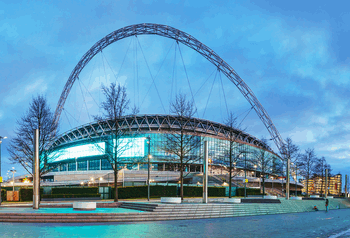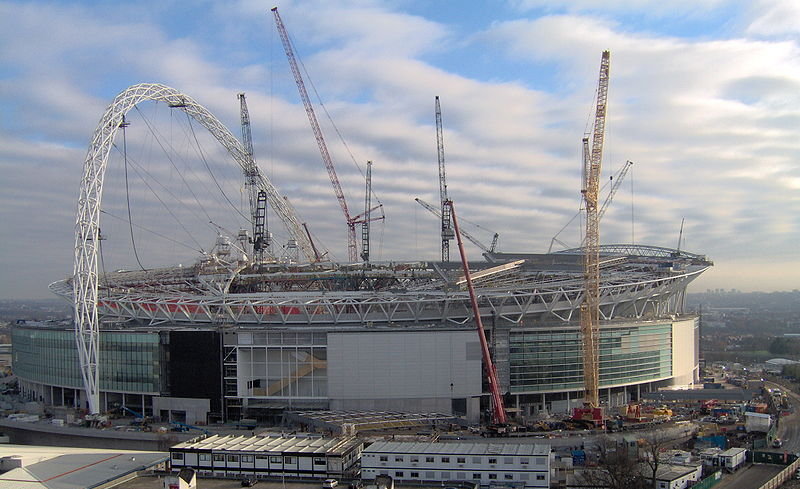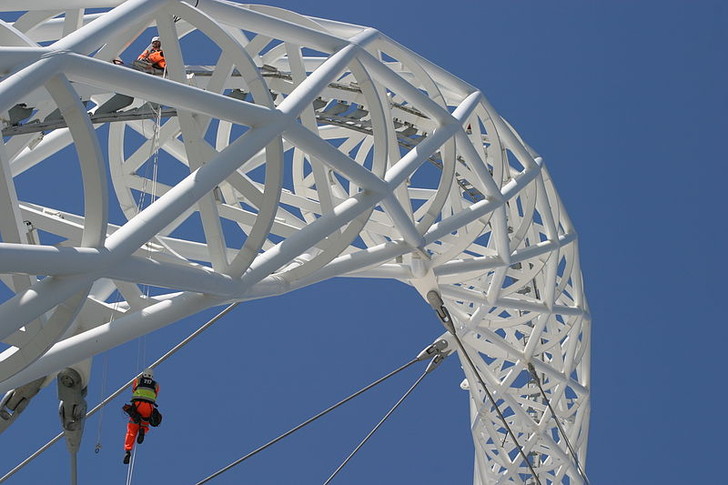 Football is such a crazy sport. It is one of the most loved forms of entertainment anywhere in the world, watched by billions on a regular basis. It is also one of the sports that has the most money thrown at it, from the cost of the players who move from club to club through to the prices paid by broadcasters to hold the rights to show live matches.
Football is such a crazy sport. It is one of the most loved forms of entertainment anywhere in the world, watched by billions on a regular basis. It is also one of the sports that has the most money thrown at it, from the cost of the players who move from club to club through to the prices paid by broadcasters to hold the rights to show live matches.
Yet so many of the stadiums that clubs play their games in are far from being the idyllic sort of locations that we’d imagine when we think about the finances involved in the sport. In many cases some clubs play their home matches in the same venues that they’ve been in practically since they were formed. Admittedly, a look at the likes of Anfield and Old Trafford would see you greeted by grounds that bear almost no resemblance to the ones that opened towards the end of the nineteenth century, but they’re still not ‘new’ grounds in the way that The Emirates is for Arsenal or The King Power Stadium is for Leicester City.
Why is it that clubs don’t invest part of their abundance of riches in moving to a new location as soon as the previous one gets a little bit old hat? There are actually numerous answers to that question, including the fact that supporters quite like the familiarity of the club’s long-term home. Ask Liverpool fans if they’d like to leave the Kop or redevelop the ground and the answer will be fairly clear. There’s also the fact that, whilst football is clearly a very rich sport, not all clubs have the money to up sticks and move somewhere else.
It is usually far more cost effective to develop the ground that they’re in than it is to pay for a new one to be designed and built. All of which begs the question, what is the world’s most expensive football stadium? The answer, given everything we’ve just said, is actually quite interesting. These things are always in a state of flux, of course. At the time of writing, Tottenham Hotspur have just moved into an entirely new home that came close to being the most expensive stadium in the world at £1 Billion. Yet right now, the answer to the question is a ground that is also based in London: Wembley Stadium.
What Makes It The ‘World’s Most Expensive’?

Part of the problem that occurs when you’re looking at something as vague as ‘the world’s most expensive’ something or other is what definition you use to decide why it’s more expensive than somewhere else. The first thing you need to do in such situations is to outline your parameters and in this instance we’re looking very specifically at football grounds.
That means that the likes of the MetLife Stadium and the Yankee Stadium in America have to take a backseat. Yes, they cost $1.6 and $1.5 billion dollars respectively, but the former is the home of two National Football League teams and the latter is where the Yankees play baseball. There’s an argument that the Mercedes Benz Stadium in Atlanta could’ve been included in deliberations thanks to the fact that Major League Soccer’s Atlanta United FC play there, but it is primarily a location for NFL action.
Wembley Stadium cost $1.5 billion (£800 million at the time and £1.2 billion in todays money), to leave it in the currency of the above stadia in order to give you an indication of where it sits in the list. That is dwarfed by the $1.9 billion that will be spent building the Las Vegas Stadium for the Raiders, which is due to open in 2020 and wouldn’t be eligible for this conversation anyway because it’s another NFL ground.
In terms of where that sits compared to other none sports buildings, it’s behind the $1.6 billion that the Bellagio hotel of Las Vegas cost, the $5 billion spent by Apple on Apple Park in Cupertino and the government owned Abraj Al Bait in Saudi Arabia, which totalled in at $15 billion. It’s more expensive, meanwhile, than the $1.16 billion Petronas Towers in Kuala Lumpur, the Australian Parliament Building in Canberra that was $1.1 billion and also the Hard Rock Hotel & Casino in Atlantic City that also cost $1.1 billion.
Why Was Wembley Is So Expensive

We’re essentially talking pretty exclusively about the construction costs of a stadium here, so why is it that Wembley is such a pricey establishment? For starters, the building is a feat of engineering that should be marvelled at. It stands on the location of the previous Wembley Stadium, which was knocked down between 2002 and 2003. It took around four years to build it, with the final product featuring the most seats covered by a roof of any venue in the world. Ninety-thousand people can fit inside the ground and, fitting in with the idea of it being a feat of engineering, not one seat has an obstructed view. It was designed by three structural engineering firms in the form of Mott MacDonald, Sinclair Knight Merz and Aurecon, whilst an Australian company named Multiplex managed its construction.
Its not just the design of the stadium that is part of the costly element to the whole thing. The roof is also partly-retractable, meaning that a certain degree of protection from the elements can be given to those inside the stadium. There’s also the fact that it contains more toilets than any other venue anywhere in the world, with the number standing at two-thousand, six-hundred and eighteen. Add to that forty-thousand piles in the foundations, fifty-six kilometres worth of heavy duty cables and around twenty-three thousand tonnes of steel and you can start to see where a good chunk of the money spent on the stadium went. It’s also a multi-purpose venue, even if football is the primary reason for its existence. It has the ability to host rugby, boxing, American football and music concerts, should the occasion call for it.
Stadiums are about so much more than the physical structure, of course, and bosses ensured that Wembley could boast facilities that would rival any other location in the world. There are just shy of seven-hundred places where you can get a drink inside the ground, giving staff the ability to serve more than forty-thousand pints at half-time. That all cost money to build, as did the synthetic hybrid pitch that makes it one of the nicest stadiums to play football on anywhere. There’s also an arch that you can see over the North Stand, which is one-hundred and thirty-three metres tall and was intended to be a replacement for the Wembley Arches of old in terms of lending the place an iconic feel. One thing that no amount of money can buy, though, is a feeling of a venue lacking character. One of the criticisms levelled at Wembley Stadium from those that have visited it for cup finals and concerts is that it’s a bit of a soulless shell of a place. Perhaps something that will only cease to be the case once history has seeped into its walls.
